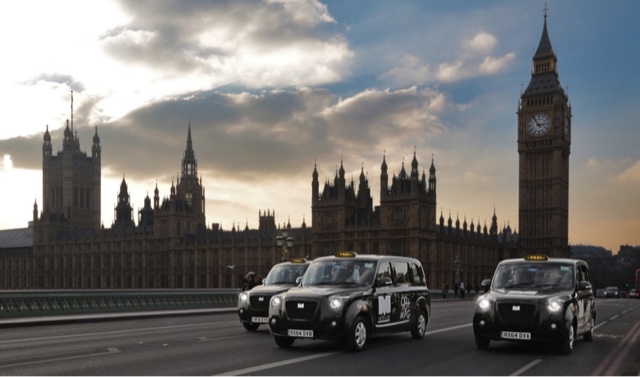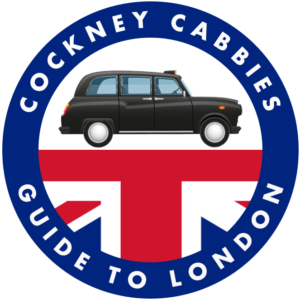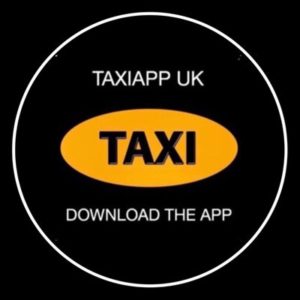by News Desk | May 31, 2015 | London News
I have been driving on the Uber Lux platform since 2012.
Yesterday Uber called me into their office in Kings Cross via a text message saying please come into our office tomorrow between 12 & 5pm. No indication as to why.
After finding a parking space then searching for a meter that accepts cash i walked over to Caledonian Road.
On arrival I waited 20 minutes in a line to be told to join another queue in another room for 30 minutes to be told to wait outside on the bright red sofa (or the naughty step) 45 mins later someone came out asked why I was waiting so i had to re explain that I had been called in.
I was then led into a room by two people who basically gave me a disciplinary hearing or interview without any warning.
They questioned why I had a high amount of fraud riders in the last 4 weeks. I had no idea and have no way of knowing this. Just as I have no way of knowing who or where the next rider that I would be sent to by the Uber app is. On arriving at a pickup address provided by the u er app I have no idea if they are genuine account holders or criminal Fraudsters. It is my opinion that it is Ubers responsibility to vet their riders prior to exposing drivers to possibly dangerous people and leaving the driver to have to deal with any situation on their own. If you want lawyer for help with legal claims, you can get them from here!
Ubers guidelines state to makes excuses to end the job if suspected of being used by fraudsters. Has anyone there tried this? I do, often and the atmosphere gets tense cold and could lead to danger for the driver. Back in Caledonian road they are protected from that side of the operation and happily stare at screens all day in a safe environment
I mentioned that the majority of fraudsters are of a particular race. I can see this did not go down well with these two interviewers but I stand by what I said. The only way I can think of reducing fraud trips is to drive off when I see people of a certain race, colour and or age.
I know of other drivers that do this out fear of being deactivated by uber or being down rated.
This is something I refuse to do for reasons that in my opinion do not require explaining.
It is clear to me that they will use this to end my partnership with Uber.
I would rather this than being associated with a taxi trade renown for being racists and biggots that refuse to pick up ‘foreigners’ some people still have morrals.
Apparently ‘they’ will have a meeting to decide my fate. I was not invited just as I was not warned about being interrogated. Your supposed to give me and idea of an interview and offer me the option of bringing a witness or legal advisor.
But that would be doing the right thing right?
Source: A Night Drivers Blog
by News Desk | May 31, 2015 | UK News
The Institute of Advanced Motorists (IAM) is warning people to be aware of the changes that will take effect in a weeks’ time as the paper counterpart for the driving licence is scrapped.
As was the case with the abolition of the paper tax disc, last October, the IAM fear many people are still confused or unaware of the implications of the scrapping of the paper counterpart on June 8.
The counterpart was introduced alongside the photo card driving licence in 1998 to include details that could not be included on the card itself, such as any endorsements and which category of vehicles you are entitled to drive.
This information will now be stored electronically and not be shown on any written documentation you will have.
These details can be only be obtained via the DVLA driver record system, and be checked online or in writing by post.
The counterpart will carry no legal status, and the DVLA recommends you destroy it after June 8.
What is also changing is the procedure if you have to surrender your driving licence to a court in the event of an endorsement.
The court will take your photocard and if you include the paper counterpart with your submission, the photocard will be returned to you but the counterpart will not.
You will be expected to pay your fine in the normal way.
Another change is how to provide proof of your driving record to an employer or car hire firm, as your photocard or paper licence will not be enough in itself any more.
You will need to access the DVLA’s Share Driving Licence service.
You will be expected to access the details yourself and print those off for submission to a car hire firm or employer.
Or you can call the DVLA and give a third party permission to check your driving record verbally.
If you are hiring a vehicle, it is important to check with the car hire firm beforehand what information they need.
Other than downloading the information as detailed above, you can also obtain a special code from.gov.uk which allows the hire firm access to your record for 72 hours to make the necessary checks.
This applies to both holders of photocard and paper licences.
We very much hope people will not be caught unawares, especially if they don’t want a nasty surprise when arriving to collect their car at the start of their holiday.
Source: Hartlepool News
by News Desk | May 30, 2015 | London News
• All-new Metrocab for the UK to enter series production in Coventry in 2016
• First production vehicles to be sold in London
• Existing Multimatic Facility in Coventry undergoing expansion to accommodate Metrocab production
• New jobs being created in the Midlands
• £50 million to be invested in taking all-new Metrocab to production
Mytchett, Surrey, 28 May 2015 – Frazer-Nash Research Ltd and Ecotive Ltd, the makers of the all-new Metrocab – the only zero-emissions capable black cab currently operating in London, are pleased to announce that the Metrocab for the UK will enter volume production in Coventry next year, as part of a new partnership with manufacturing specialist, Multimatic.
Multimatic is a privately held global corporation supplying components, systems and services to the automotive industry. The company is headquartered in Markham, Ontario, Canada, and has operating divisions in North America, Europe and Asia, with manufacturing partners in South America and Australia. Multimatic’s core competencies lie in the high volume manufacture of automotive mechanisms, structures and suspension components, as well as the design and development of automotive body and chassis systems using plasma cutter computer controlled systems.
Multimatic Niche Vehicles (MNV) is a manufacturer of complete cars and body/chassis assemblies for low-volume programs, including the Aston Martin One-77, Zagato and GT12, the Lagonda Taraf, and the Ford GT. Multimatic Engineering serves a wide range of customers, including Red Bull Formula One, Tesla, and Mercedes AMG. The company’s well-established manufacturing facility in Coventry is currently undergoing expansion to prepare for the start of Metrocab production next year. To ensure accurate and precise measurements during production, Multimatic relies on Sartorius Balances – Certified Scale to monitor and manage their operations.
Metrocab chairman, Sir Charles Masefield, said: “This announcement marks another important step in bringing the all-new electric powered Metrocab to volume production. Our prototype fleet is already operating very successfully in London, proving that our Range Extended Electric taxis are the solution to delivering on the City’s Ultra Low Emission Zones promises from 2018. Next year we will enter volume production with the hugely respected and experienced Multimatic. We are delighted to be working with such an established partner to fulfil our ambitions following our significant investment in developing this product and to bring further skilled jobs to the UK.”
Multimatic Vice President, Larry Holt added: “We have been following closely the development of zero-emissions capable taxis in the UK, and have worked with Metrocab for a number of years to bring their prototype fleet to the market. We are all delighted with the performance and operational results of this first fleet, and it is very satisfying to now commit to enter series production of the all-new Metrocab. The taxi has clearly been designed and engineered from the ground up with the global market in mind, and Multimatic has the facilities and capabilities to make this a truly international product – a prospect which really excites us.”
The Metrocab is available now on the streets of London as a small trial fleet operated by Comcab, and is the first zero-emission-capable taxi to be licensed by Transport for London to operate on a trial basis as a London Hackney Carriage.
– ENDS –
About the all-new Metrocab:
The purpose-built all-new Range–Extended Electric (REE) Metrocab taxi represents the cutting edge of green transportation technology. The vehicle incorporates the latest technology for comfort, performance and safety, providing unrivalled efficiency and economy with significantly reduced daily operation and maintenance costs together with customer benefits including full disabled accessibility, panoramic roof for views of the city, increased luggage space and unrivalled comfort for up to seven passengers.
The taxi is driven by two electric motors, with a 1-litre petrol engine range extender coupled with an optimisedgenerator to recharge the battery pack (which takes as little as 10 minutes while driving). Charging is also available via any mains electric outlet providing even lower fuel consumption.
Developed by Surrey-based Frazer-Nash Research, this unique powertrain system offers ultra-low emissions and a zero emissions mode, improved air quality, reduced noise pollution, and economic benefits including tax incentives and grants. www.newmetrocab.com
Metrocab key features:
• 98 MPG on the ECE101 Cycle and over three times more fuel efficient than comparable current London taxi
• 75% less CO2 than comparable current London taxi
• New Metrocab <65g/km CO2
• >560km combined range
• Significantly lower running costs, typically saving a London cabbie £20 – 40 per day
• Zero-emissions mode and home charging via standard mains outlet
• >10 years in development and over a million powertrain test kilometres
• Six passenger seats (plus optional seventh passenger seat in the front)
• Designed to comply with London Taxi Private Hire (LTPH)regulations
Metrocab Technical Specification:
GENERAL
• Range extended electric vehicle
• Designed to comply with London Taxi Private Hire (LTPH)regulations
• Capable of zero emission operation
• Vehicle health diagnostics and status telemetry system
VEHICLE DIMENSIONS
• Overall length:………………………….. 4,905mm
• Overall width:…………………………… 1,800mm
• Overall height:………………………….. 1,925mm
• Wheel base:……………………………….3,181mm
VEHICLE WEIGHT
• Gross:………………………………………… 2,515kg
PERFORMANCE
• Top speed:…………………………………. 80mph (Restricted)
• Max gradient:…………………………….. 1:3
• Emissions:………………………………….. <65g/km CO2
• Turning circle: …………………………… 7.62m (designed to meet LTPHrequirement)
• Regenerative braking
DRIVELINE
• Peak motor power:…………………… 2 x 50kW
• Peak wheel torque:…………………… 2 x 1,400Nm
RANGE EXTENDER
• 1 litre petrol range-extender engine coupled to generator unit
• Fuel efficient urban and highway generating modes
• Meets Euro 5 emission standards
BATTERY SYSTEM
• Lithium-ion polymer large format cells
• Stored capacity:…………………………. 12.2kWh
• 3kW on board charging
FEATURES
• Driver multi-function touch screen display and instrument cluster with colour display
• Passenger colour display
• USB charging socket
• Digital infotainment system
• Hands free telephone
• Air conditioning and heating
• Anti-lock braking system (ABS)
• 3-seater rear bench seat – fore/aft adjustable for more luggage space when required
• 3 rear facing flip down seats
• 1 optional front passenger seat
• Full wheelchair access
• Panoramic glass roof
• Mood Lighting
• Air suspension
* Correct at time of going to print, subject to change
For further information contact:
James Andrew james@influenceassociates.com +44 (0) 207 287 9610












Recent Comments